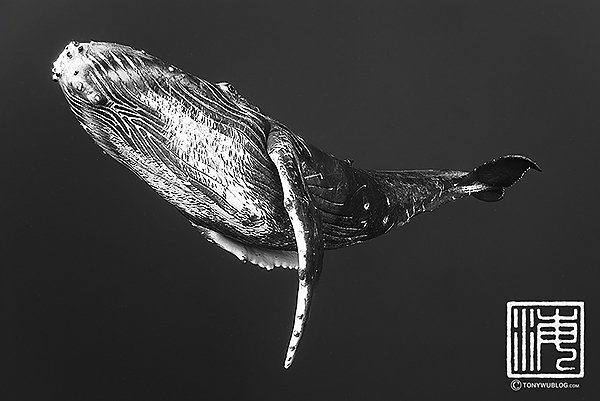What makes for a great black and white image?

I think most people will be aware of the black and white challenge that is currently very popular on Facebook. If you are not, the idea behind it is that each person posts 5 mono images over 5 days, each day nominating someone else to post a further 5. Whilst there are some amazing images being shown, the ease of software-based mono conversion has perhaps meant that some images may perhaps have been better left in color.
Wetpixel approached a group of eminent underwater photographers and asked them to write a few lines on what makes for a great mono image, and to show an example from their own work. Inevitably, some of them cheated and a few lines became full blown essays and an example became many examples! Many thanks to all our contributors. What follows is the definitive guide to creating black and white underwater images…..
Aaron Wong

Two key factors crucial to good black and white images are contrast and separation. Contrast helps give the textures that makes the image “pop” out. Be sure that the whites are not over exposed, this usually kills contrast more than blacks will.

Be mindful of separation, this is the part that “separates” your main subject from the background. Unlike color images where you can use colors to separate a red fish from a blue reef, black and white images have nothing but shades of grey to do that. So learn to shoot your subjects against a cleaner background. It also helps to “see” your images in black and white while you are shooting it.

Try converting some of your older images to black and white and you will soon learn the range and limits. Blues become black and browns and yellows become different shades of grey. Being able to envision a scene in black and white will most certainly help as you go hunting for that elusive black and white image. Shooting with the full intention of converting it to black and white rather than merely converting whatever you capture randomly and hoping it turns out well is surely more rewarding.

To see more of Aaron’s work, please visit his website.
Daniel Botelho

In my opinion, all images have their own personalities, and can speak to the photographer, telling him or her; “Hey I am a black and white”. I think that a mono image offers less dynamic stimulus to viewer´s brain, so technically speaking the photo must have good composition, contrast, texture, crisp sharpness, motion and of course an unforgettable moment captured and eternized by the photographer.
A.JPG )
I also still believe that there is much more involved in this process of identifying and creating a black and white image and that it transcends all technical aspects There is a truth that if you create a great black and white image, what will matter is a “wow” factor acting first on the photographer and consequently to the general public. As I said first, a photo can claim itself as a natural born mono, even being first generated in colors, it is up to the photographer to carefully listen to the image.

To see more of Daniel’s work, please visit his website.
Stephen Frink

Much of what we shoot underwater is driven by color. Skilled application of artificial light restores color selectively filtered as a function of depth and the cyan hue of seawater. Yet, some subjects are more defined by shape or texture or shading, and these can be artistically rendered in black and white. Sharks and whales are obvious subjects, for their monochromatic nature, accentuated by their countershading, provides for options when rendered in black and white.
Having come to digital after decades in analog film and print processing, I am intrigued how “Lightroom” software emulates the “Darkroom” techniques.
There are controls for contrast (not unlike our “underexpose and over process” treatment of film and grades of black and white paper), selective density, dodging and burning, and even the particular color bias of the black and white from cool to warm (think selenium toner for a cooler black and white all the way through sepia toner for a more aged look).
Digital rendering of RAW images to black and white require more than a click of the mouse to “black and white”. It needs to be an image that benefits from the conversion, and then implementing the software adjustments required to complete the vision.
To see more of Stephen’s work, please visit his website.
Tony Wu

It is perhaps impossible to state with certainty what makes for a great monochromatic image, as there is always room for personal taste and breaking of oft-cited rules.
But, at least in the case of underwater photography, it’s easier to point out the one thing that is almost certain to make for a cruddy black-and-white photo. Namely, converting a low-quality color photo to monochrome.
When you strip away color from a picture, the critical remaining elements include light, composition, form, movement and contrast. In other words, the fundamentals of image-making.
If you start with a weak color image, converting to black-and-white will simply underscore the photo’s shortcomings.
To see more of Tony’s work, please visit his website
Page 1: Aaron Wong, Daniel Botelho, Stephen Frink, Tony Wu.
Page 2: Alex Mustard.
Page 3: Abi Mullens, David Barrio, Martin Edge, Ellen Cuylaerts, Kurt Amsler, Jason Bradley.
Page 4: Douglas Seifert.
Page 5: Jean Bruneau, Amanda Cotton, Christian Vizl, Brian Skerry, Mike Veitch.